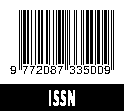Strategi Programming Televisi Swasta dalam Program Tayangan Prime Time
Abstract views: 567 | PDF downloads: 0 PDF downloads: 2447
Abstract
The level of public information consumption through television media of various generations is still high. Characteristics of television media with audio-visual is suspected to be one of the main factors of interest of the public in obtaining information. This condition makes the competition in the television media industry continue to try to maximize their viewership. This study aims to find out the programming strategy applied by Kompas TV on the Sapa Indonesia Malam program that aired in prime time in reaching the audience. The research uses qualitative descriptive analysis method. In designing the programming strategy for Sapa Indonesia Malam program, the Kompas TV programming team made several efforts and implemented almost the same as 5 programming elements according to Sydney. Based on the results of the research, it is found that: (1) the strategy of Programming Sapa Indonesia Malam Kompas TV started by determining Segmentation and Targetting of audience. Next work on 5 programming elements by Sydney and finally position the program to the viewer (positioning). (2) In implementing the programming elements of Sydney, the Sapa Indonesia Malam program has almost applied all elements with the maximum except in the fifth element of Breadth of Appeal. (3) Sapa Indonesia Night Program Kompas TV is able to compete with competitor news television program that aired at the same time.



















